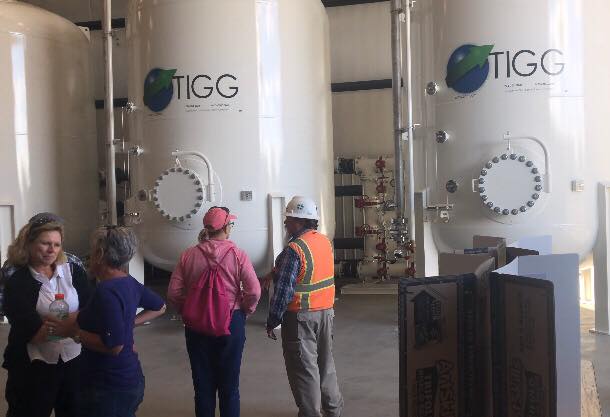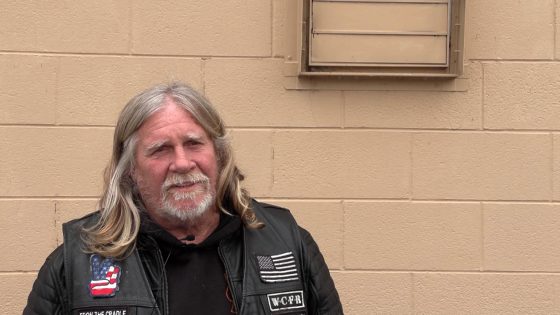Wurtsmith Air Force Base unveils new filtration facility to combat PFAS contamination

Members of the community discuss the new filtration system at the Wurtsmith Air Force Base.
Oscoda — Just over 50 people got a glimpse of the brand new filtration facility that will filter PFOA and PFOS contamination at the Wurtsmith Air Force Base.
Community leaders, water activists, Michigan Department of Environmental Quality representatives, Air Force representatives, and the public paced around the space to learn how the process of filtration works and what effect it will have going forward in the Oscoda community. The site will use Granular Activated Carbon to treat the contaminated ground water before reaching drinking water sources.
The facility can treat up to 500 gallons per minute and offers more space for additional tanks to be added, should more treatment be needed. The Air Force sees this move as a step in the right direction and a commitment to protect health and drinking water.
“We still have many more activities planned out here to both study the issue and then also to do things like this which is mitigate the problem and treat that groundwater,” said Air Force BRAC Environmental Coordinator Dan Medina. “I think a lot of folks want to see the proof, you know before we trust you, show us what you are going to do, and I think this serves as part of that commitment.”
While many sees this facility as a great achievement. Others believe that this treatment facility is long overdue. Contamination has been leaking into groundwater around the Air Force base and areas all around Oscoda, including Lake Huron. The Need Our Water activist group has been pushing for cleaning drinking water for over a year.
“It’s progress,” said Need Our Water Co-founder Cathy Wusterbarth. “the progress has been very slow… we need more of these GAC plants, we need probably four more, so we have two now on this property and we need about four to actually address all of the contaminants on this property.”
The unveiling was followed by an open Restoration Advisory Board Meeting to discuss the future of treatment for the PFAS contamination. The board is made up of community members and leaders, members of the Michigan DEQ, Air Force, Oscoda Schools, and Health Departments.
The message was fairly simple. The people want to see more concrete details on each of the 23 contaminated sites in terms of what is being done, the specific amount of contamination, and where the site is in the process of being restored.
Another item the people want to see is the 2017 data collected from the contamination sites. Sampling and testing will continue to happen throughout the month with members of the Air Force and DEQ. Scientists working on this problem are asking the community to submit pictures of PFAS foam for more studies on how this relatively new contaminate works.
These details will be discussed at the next board meeting.






